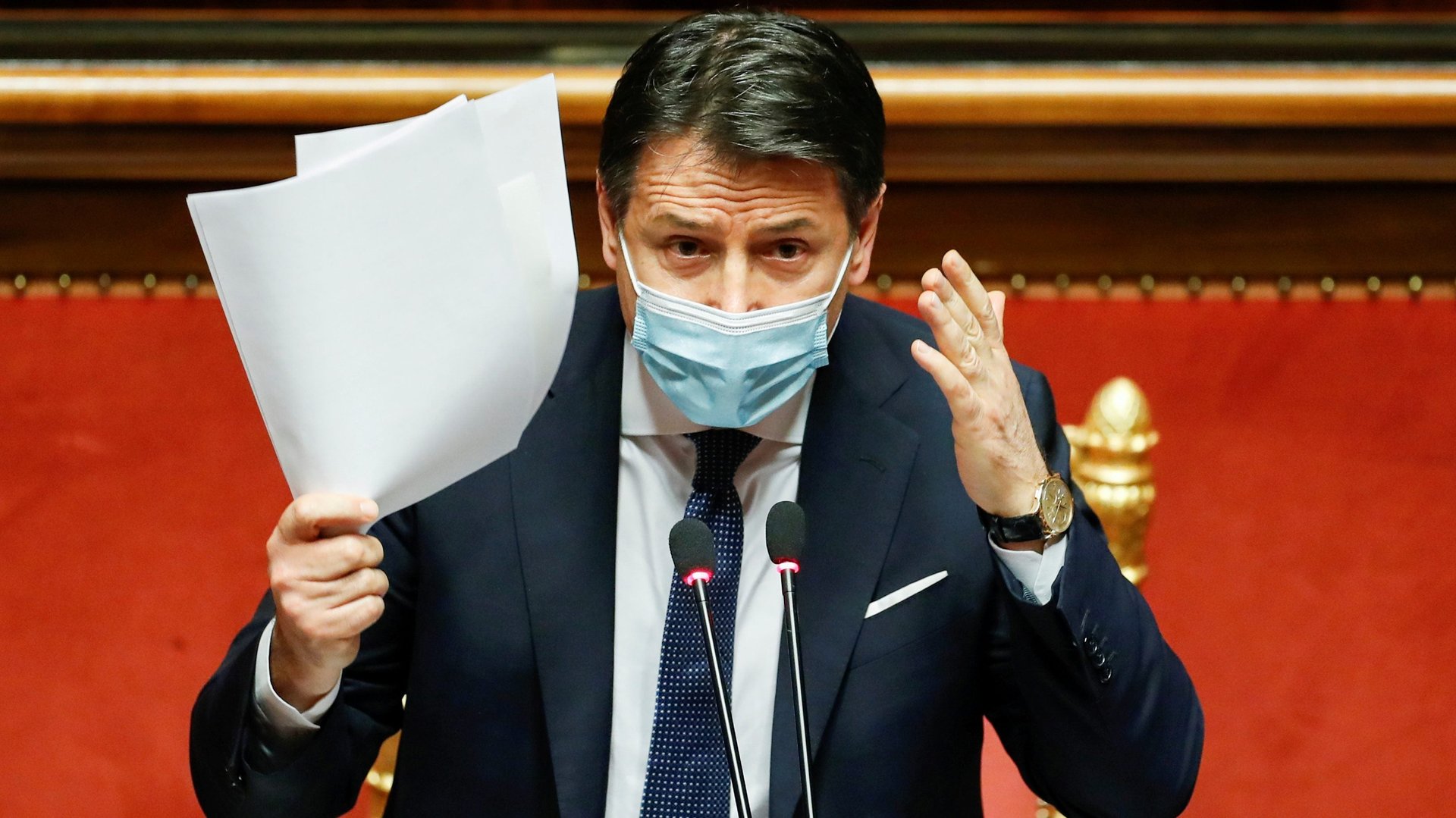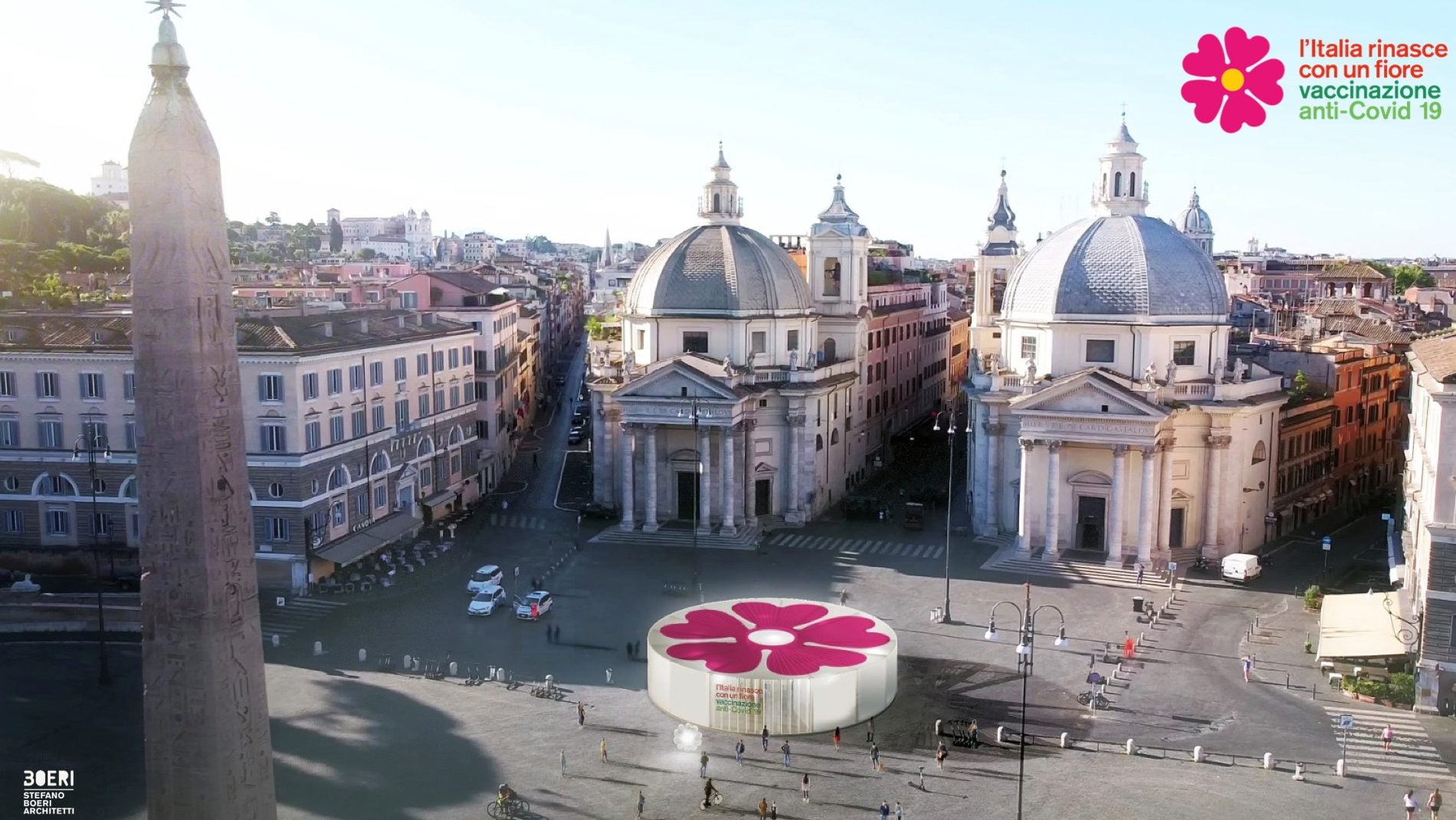A government crisis is poised to make Italy’s Covid-19 trouble even worse
Italy was hit hard by Covid-19. In March, its northern city of Bergamo, then the site of the world’s deadliest Covid-19 outbreak, became a global symbol of the pandemic, as the number of dead forced army trucks to transport them to other cities for cremation. Through the spring of 2020, the restrictive country-wide measures imposed by the government earned international praise, and by the summer, the country’s response to the virus was hailed as a model.


Italy was hit hard by Covid-19. In March, its northern city of Bergamo, then the site of the world’s deadliest Covid-19 outbreak, became a global symbol of the pandemic, as the number of dead forced army trucks to transport them to other cities for cremation. Through the spring of 2020, the restrictive country-wide measures imposed by the government earned international praise, and by the summer, the country’s response to the virus was hailed as a model.
It didn’t last long. Since the fall, the coronavirus second wave has found the country unprepared and vulnerable. A confusing patchwork of last-minute orders imposed since October—somehow both too restrictive to allow regular functioning of the economy and not restrictive enough to effectively limit the virus’s spread—have failed to improve the situation.
As the new year rolled by, Covid-19 had cost Italy the most lives in Europe (close to 86,000 so far, out of a population of 60 million), an economic contraction of 9.2%, any chance of catching up on its public debt anytime soon (it currently stands at 158% of the country’s GDP), and the greatest overall number of lost school days on the continent. To make matters worse, the rollout of vaccines has been slow, inconsistent, and is already rife with scandals—reports suggest an alleged third of doses might have been administered to citizens outside the priority lists. It is, in short, a textbook clusterfuck.
And if you think things couldn’t get worse, well, you probably don’t know Italy.
Giuseppe Conte, the country’s prime minister, just offered his resignations amid a confusing and ill-timed political crisis started a few weeks ago by former prime minister Matteo Renzi and his party, which was until recently part of the governing coalition. The main reason behind the crisis is a supposedly strong disagreement over the use of European relief funds and built-up discontent with decisions made by the government in recent months. But the timing, the lack of a clear improvement in sight, and the risk of a far-right ascent have led most observers to think of it as little more than a reckless political move by Renzi, who is no stranger to attention-grabbing gambles.
So what now?
As a result, Conte is resigning, bringing to an end the Conte government (the second in the same legislature), so that the president of the republic, Sergio Mattarella, can likely ask him to put together a third Conte government.
It’s not a done deal—Conte’s majority is extremely narrow—and all other scenarios are currently open, including a so-called technical government (comprised of technocrats rather than members of the elected parties) and, although it’s unlikely, an early election. This is the outcome desired by far-right parties Fratelli d’Italia and Lega, which are poised to capture a majority of the parliament.
In order to pick a new prime minister, or understand if there is no way for a government to get the majority of the parliament’s vote, Mattarella will consult with the leaders of all elected parties. He will begin this work, which will take a couple of days, tomorrow.
In the best-case scenario, Italy will be out of government for only a few days. However, it comes after the weeks of uncertainty brought on by the crisis, in the middle of an extremely delicate moment for its Covid-19 response.
The country is still dealing with over 400 deaths a day from the pandemic, and might feel headless without a prime minister and government able to impose new restrictive measures or update current ones (the prime minister remains in office through the crisis, but only to handle current affairs). After all, Conte still enjoys popularity among a majority of Italians—56% think he’s doing a good job as premier.
Meanwhile in Covid-19 land
The government’s crisis leaves the country between a rock and a hard place. The errors of the outgoing administrations in managing the pandemic have been many, from the lack of focus in enabling the opening of schools, to the delays in compensating businesses affected by forced closures. But waiting for another government to get to work, or having an early election, seems less than ideal as the crisis continues to unravel the country.
The vaccination campaign has had a number of hiccups, and a government focused on dealing with political crises over ensuring an effective rollout might further weaken the population’s trust in the vaccine, when only 43% of Italians have said they want to take it.
While over a million Italians have received the first shot of the vaccine, less than 7,000 are fully vaccinated. At this speed, the plan of vaccinating all high-risk categories by the end of March will fall short, leaving over 3 million high-risk individuals without a vaccine. (To be fair, it’s not like the rest of Europe is proceeding much faster.)
The government has also had other troubles in the past few weeks, including a miscalculation of the doses delivered by Pfizer, a lack of syringes, and a wrongful classification of Lombardia’s level of outbreak risk. Although in many cases responsibilities were likely shared with regional administrators, it’s all contributed to the perception that Covid-19 is being mishandled.
Among all this, a legacy of the now-gone government is its most curious vaccine-related project. The administration is currently awarding contracts to build between 21 and 1,200 pavilions in the shape of a primrose flower designed by leading Italian architect Stefano Boeri, where vaccines will be administered.

The temporary structures, made of recyclable materials—and intended to be dismantled once the drive is over—are essentially small disposable clinics, and have been planned to create more enthusiasm for the vaccination campaign.
The cost of the endeavor could be as much as half a billion euros, and it’s unclear what would happen to the project under a new government. As the situation stands, it’s hard to think of a better symbol for the current state of the country than the Covid-19 primrose-pavilion project: An utter mess—but very pretty.